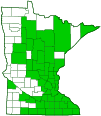New Jersey tea
(Ceanothus americanus)
Conservation • Description • Habitat • Ecology • Use • Distribution • Taxonomy
Conservation Status |
|
|||||||
| IUCN Red List | not listed |
|||||||
| NatureServe | N5 - Secure SNR - Unranked |
|||||||
| Minnesota | not listed |
|||||||
Description |
||
New Jersey tea is a low, slow growing, drought resistant shrub. It occurs in the United States east of the Great Plains and in adjacent Canadian provinces. It is found in prairies, meadows, savannas, and abandoned fields; at forest and woodland openings and edges; and on dunes. It is also cultivated as an ornamental. It grows under full to partial sun, in dry to moderately moist, sandy or rocky soil. New Jersey tea is a bushy, compact shrub that rises from a large root system that includes a stout taproot. It can be 16″ to 60″ (40 to 150 cm) tall but in Minnesota it is usually no more than 40″ (100 cm) in height. The stems are erect or curving up from the base (ascending) and much branched. They do not root at the nodes. The bark is grayish-brown. Branches are ascending, flexible, and round in cross section. They are not thorn-tipped. First year branches are green to brownish-green and are densely covered with minute, more or less appressed hairs. Older branches are brown or reddish and minutely hairy, eventually becoming hairless or almost hairless. The leaves are alternate, 1¼″ to 4″ (30 to 100 mm) long, and ⅝″ to 2 9⁄16″ (15 to 64 mm) wide. They are on hairy, ⅛″ to ½″ (4 to 13 mm) long stalks (petioles). The leaf blades are herbaceous, not leathery, not resinous, and not aromatic. They are oblong to oblong egg-shaped. They are broadly angled, rounded, or shallowly heart-shaped at the base and angled or slightly tapered to a blunt or sharp point at the tip. There are three main veins arising from the base of the blade, a midvein and a pair of secondary veins that are as prominent and sometimes as long as the midvein. The upper surface is dark green, dull, and usually sparsely to moderately covered with short, cobwebby hairs, rarely hairless. The lower surface is pale green and moderately to densely covered with short hairs, rarely hairless. The margins have 27 to 65 or more rounded to pointed, gland-tipped teeth per side. The leaves will shrivel and discolor in dry conditions but fully recover after a rain. The inflorescence is a few to several panicle-like, cylinder-shaped to cone-shaped, 1 3⁄16″ to 5½″ (3 to 14 cm) in diameter clusters of flowers, each one at the end of a short branchlet rising alone from an upper leaf axil of the current year's growth. The stalk (peduncle) of each inflorescence is usually longer than the subtending leaf. Each flower is about ¼″ wide. There are 5 outer floral leaves (sepals), 5 petals, 5 stamens, and 1 style. The sepals are white, triangular, curved inward, and 1⁄64″ to 1⁄32″ (0.5 to 1.0 mm) long. The petals are white, spoon-shaped, widely spreading, and 1⁄16″ to ⅛″ (1.5 to 2.5 mm) long. The stamens have white stalks (filaments) and usually dark anthers. The style is white and has 3 lobes. The fruit is a black, capsule-like, unlobed, ⅛″ to ¼″ (4 to 6 mm) wide, modified drupe with 3 stones. |
||
Height |
||
16″ to 60″ (40 to 150 cm) |
||
Flower Color |
||
White |
||
Similar Species |
||
Narrow-leaved New Jersey tea (Ceanothus herbaceus) is a smaller plant, usually no more than 24″ (60 cm) tall in Minnesota. The leaves are smaller and narrow, not broad. The inflorescence is umbel-like, smaller, and terminal. There are no additional umbels in the upper leaf axils. The fruit is 3-lobed. |
||
Habitat |
||
Dry to moderate moisture. Prairies, meadows, savannas, abandoned fields, forest and woodland openings and edges, and dunes. Full to partial sun. Sandy or rocky soil. |
||
Ecology |
||
Flowering |
||
Early July to early August |
||
Pests and Diseases |
||
|
||
Use |
||
New Jersey tea is cultivated as an ornamental. |
||
Distribution |
||||
|
Sources |
|||
| 7/27/2022 | ||||
Nativity |
||||
Native |
||||
Occurrence |
||||
Relatively common in eastern United States |
||||
Taxonomy |
|||
| Kingdom | Plantae (Plants) | ||
| Division | Tracheophyta (Vascular Plants) | ||
| Subdivision | Spermatophytina (Seed Plants) | ||
| Class | Magnoliopsida (Dicots) | ||
Order |
Rosales (Roses, Elms, Figs, and Allies) | ||
Family |
Rhamnaceae (buckthorn) | ||
| Tribe | Rhamneae | ||
Genus |
Ceanothus | ||
| Subgenus | Ceanothus | ||
Subordinate Taxa |
|||
Three varieties have been described based on leaf shape and hairiness. An analysis published in 1988 showed there is a gradual intergradation of both features across the proposed varieties, making recognition of the varieties unwarranted. |
|||
Synonyms |
|||
Ceanothus intermedius |
|||
Common Names |
|||
Jersey tea mountainsweet New Jersey tea redroot red-root wild snowball |
|||
Glossary
Axil
The upper angle where a branch, stem, leaf stalk, or vein diverges.
Drupe
A fleshy fruit with usually a single hard, stone-like core, like a cherry or peach; a stone fruit.
Filament
On plants: The thread-like stalk of a stamen which supports the anther. On Lepidoptera: One of a pair of long, thin, fleshy extensions extending from the thorax, and sometimes also from the abdomen, of a caterpillar.
Panicle
A pyramidal inflorescence with a main stem and branches. Flowers on the lower, longer branches mature earlier than those on the shorter, upper ones.
Peduncle
In angiosperms, the stalk of a single flower or a flower cluster; in club mosses, the stalk of a strobilus or a group of strobili.
Petiole
On plants: The stalk of a leaf blade or a compound leaf that attaches it to the stem. On ants and wasps: The constricted first one or two segments of the rear part of the body.
Sepal
An outer floral leaf, usually green but sometimes colored, at the base of a flower.
Visitor Photos |
|||||
Share your photo of this plant. |
|||||
| This button not working for you? Simply email us at info@MinnesotaSeasons.com. Attach one or more photos and, if you like, a caption. |
|||||
Luciearl |
|||||
 |
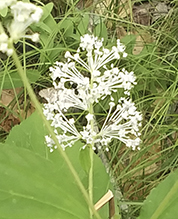 |
||||
MinnesotaSeasons.com Photos |
|||||
Plant |
|||||
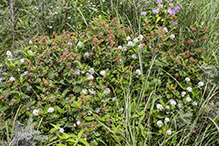 |
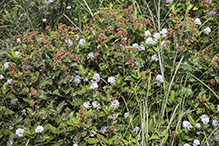 |
||||
Inflorescence |
|||||
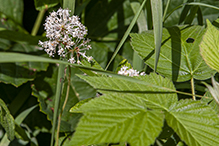 |
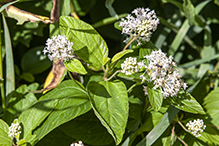 |
||||
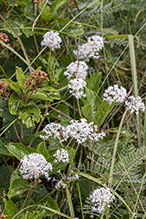 |
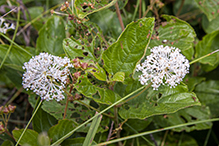 |
||||
Infructescence |
|||||
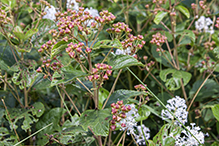 |
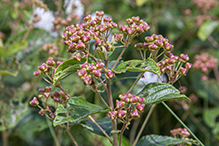 |
||||
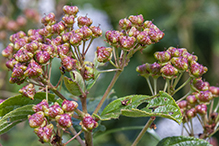 |
|||||
Leaf |
|||||
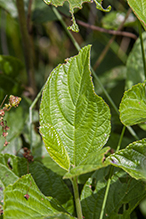 |
|||||

Slideshows |
||

Visitor Videos |
|||
Share your video of this plant. |
|||
| This button not working for you? Simply email us at info@MinnesotaSeasons.com. Attach a video, a YouTube link, or a cloud storage link. |
|||
Other Videos |
|||
| Mondays with Martha #58 - New Jersey Tea Nature Niche |
|||
About
Jun 27, 2021 This week I discuss a pollinator supporting powerhouse, the ecologically and horticulturally intriguing New Jersey tea. Beautiful, fragrant, and drought tolerant, this short-statured native shrub provides significant wildlife habitat for pollinating insects, birds, and mammals! Special thanks to Rita Seston for once again letting me use your landscape for environmental education :) |
|||
| Red Root ~ Ceanothus americanus ~ Blog #42 LymeCompass.net Lyme Compass |
|||
About
Sep 23, 2018 Ceanothus americanus is a perennial bush that grows about 3’ tall. It gets white flowers that bloom May-June in Western NC. It grows from Texas on eastward. There are may different Ceanothus species throughout North America and many have medicinal uses. Ceanothus americanus is a well known lymphatic mover. It has been used to treat chronic or acute infections where the swelling of the spleen and swollen lymph nodes are present. Red root has become a staple in the treatment of Bartnolla and helps the body clean up from the damage done from Babesia. It is not recommended for long term use, but you can switch it out with gentle lymph movers and return to its use again after a break. |
|||
| It's Tea Time! New Jersey Tea Northeastern native plant digest |
|||
About
Jun 19, 2022 New Jersey Tea a great native plant for both pollinators and the garden! |
|||
| July 7, 2019 Brian Tremback |
|||
About
July 7, 2019 Ceanothus americanus with native bees |
|||

Visitor Sightings |
|||||
Report a sighting of this plant. |
|||||
| This button not working for you? Simply email us at info@MinnesotaSeasons.com. Be sure to include a location. |
|||||
| Luciearl 7/6/2022 |
Location: Fairview Twp, Cass County |
||||
MinnesotaSeasons.com Sightings |
|||||

Created: 7/27/2022
Last Updated:
